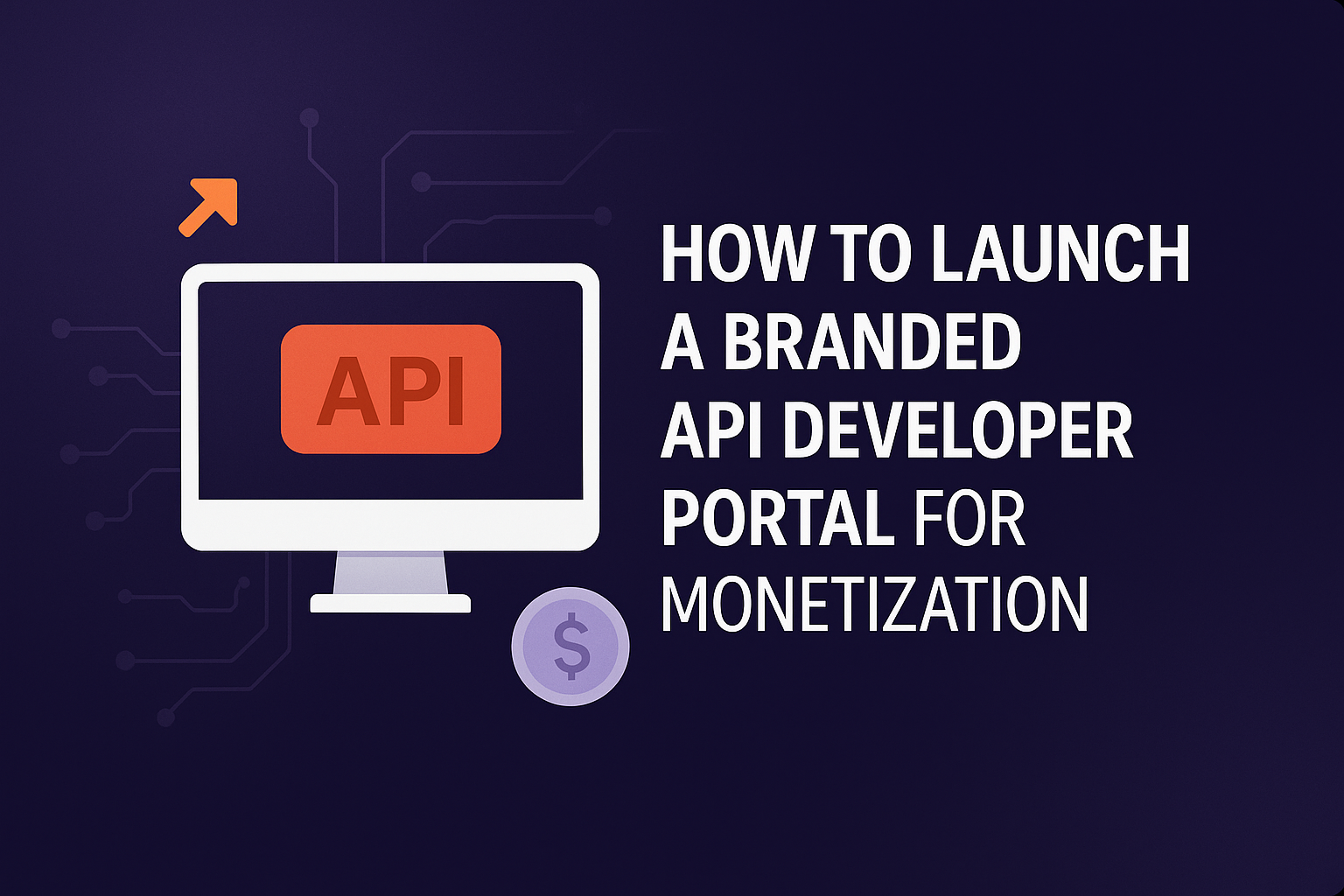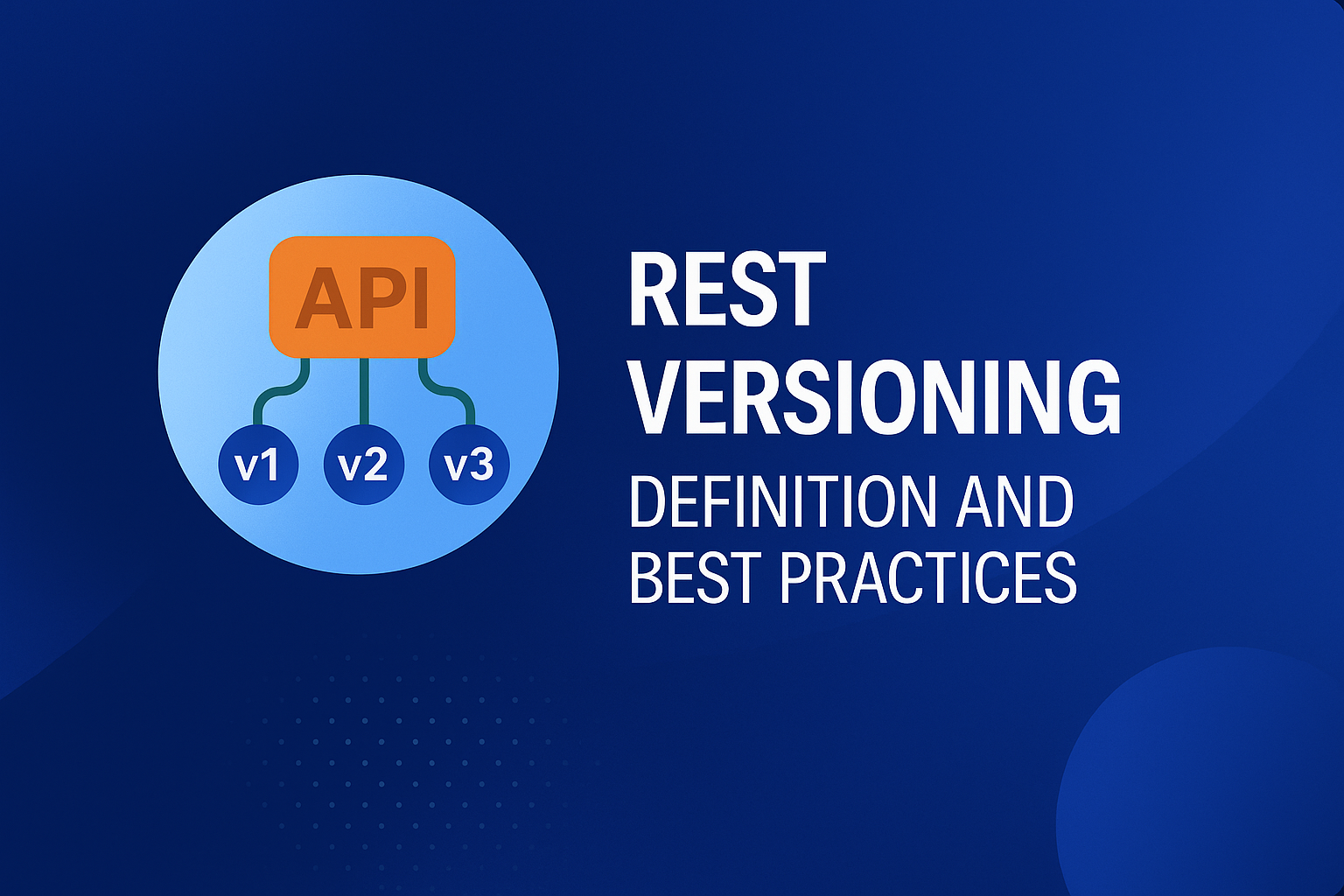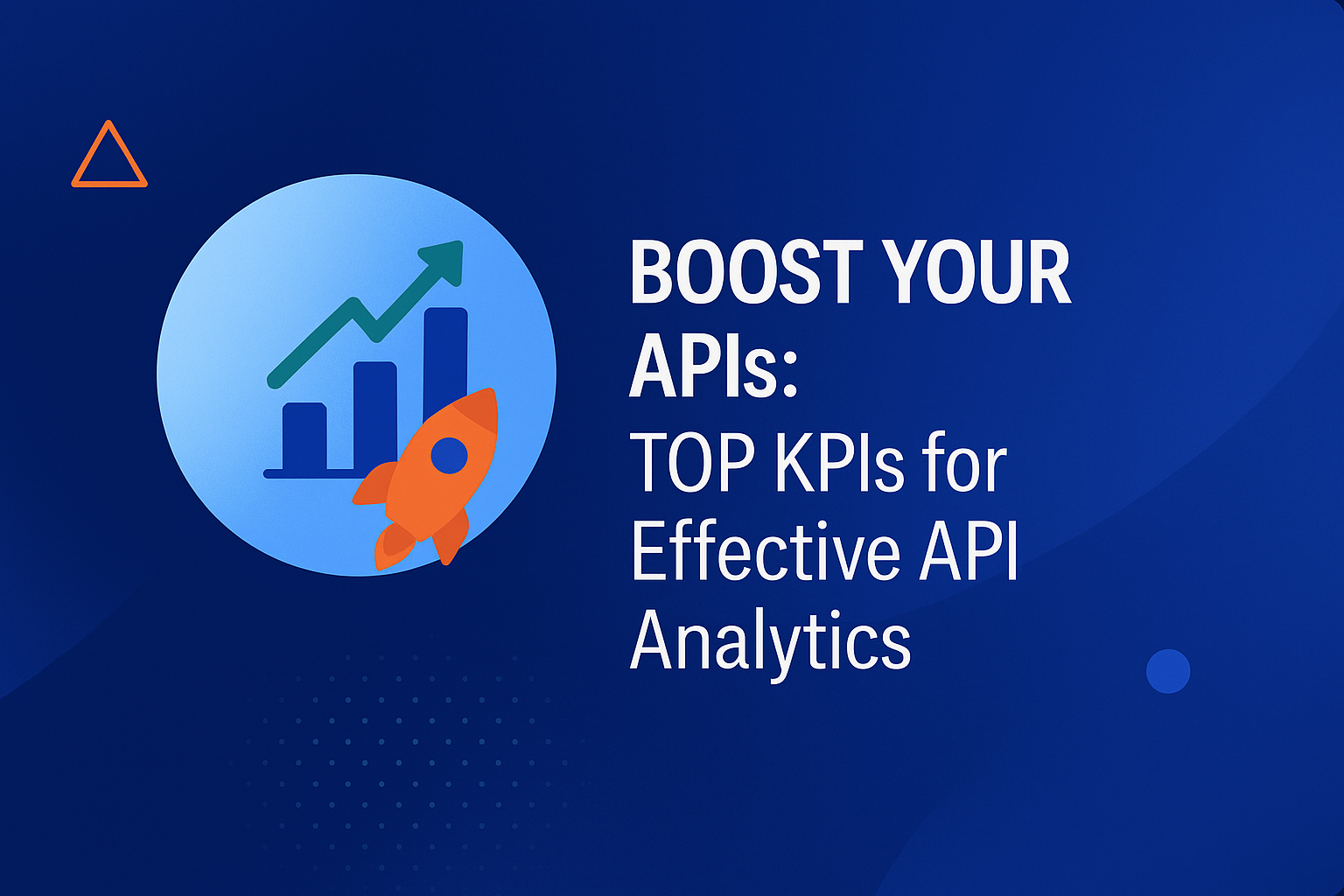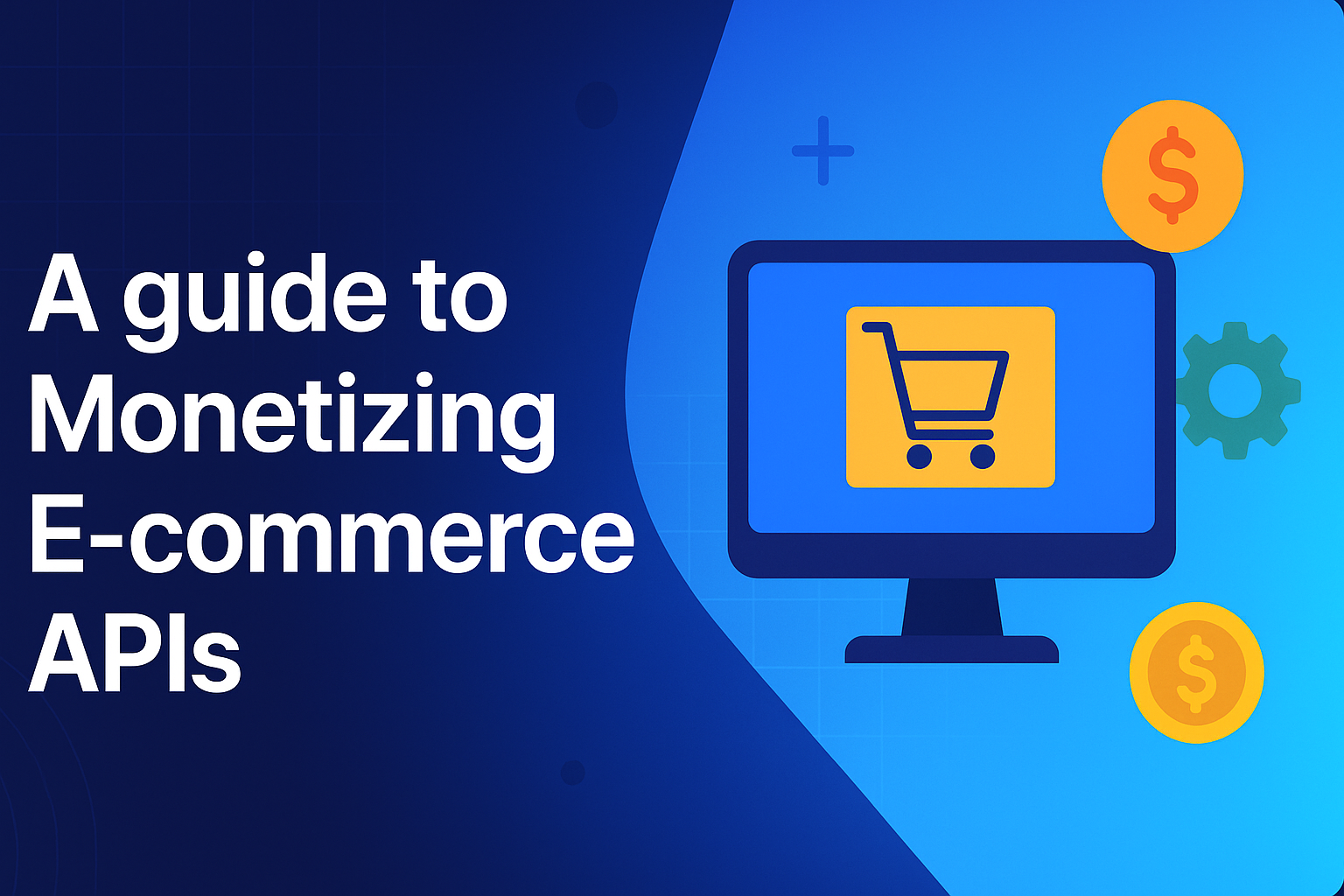
For years, e-commerce platforms have built powerful APIs as a technical necessity to connect storefronts, manage inventory, and process payments. While essential, these APIs are often viewed as a cost of doing business. But what if that mindset is wrong? What if your APIs are actually one of your most valuable, untapped assets?
This is the core idea behind the "API as a product" movement, a strategic shift that redefines APIs from technical connectors to commercial products. By packaging your platform's unique data and functionality, you can empower developers and partners to build upon your infrastructure, creating a more robust platform and turning your technology into a direct revenue engine.
This comprehensive guide will walk you through the world of e-commerce API monetization. We'll explore the key trends driving this shift, proven models, real-world examples from industry leaders, and the critical infrastructure you need to succeed.
The market forces shaping API monetization
The push to monetise e-commerce APIs isn't happening in a vacuum. It's fueled by several powerful industry trends that are reshaping how online businesses operate and scale.
Rise of headless and composable commerce
Headless commerce decouples the front-end from the back-end using APIs, allowing brands to create unique experiences on any channel. This API-first approach makes core functions like checkout and payments available as monetizable services, creating new revenue opportunities.
Explosion of partner ecosystems
Modern e-commerce platforms thrive as hubs of interconnected services like logistics and payment gateways. A rich partner ecosystem is a key competitive advantage, and monetizing APIs formalises these partnerships to generate revenue. This creates a powerful network effect where more partners attract more merchants, and vice versa.
Growth of embedded finance
E-commerce is increasingly becoming a launchpad for financial services. Platforms are embedding solutions like "Buy Now, Pay Later" (BNPL), issuing business credit cards, or offering merchant cash advances directly within their dashboards. These services are almost always powered by APIs, and they present a clear opportunity for a transactional or revenue-share monetization model.
The increasing importance of developer experience (DX)
As APIs become products, the developers who use them become customers. A superior Developer Experience (DX), encompassing clear documentation, sandbox environments for testing, seamless onboarding, and responsive support, is no longer a nice-to-have. It's a critical factor for adoption. The best API monetization strategies recognize this by offering premium support or higher service levels as part of their paid tiers, turning great DX into a monetizable asset.
4 proven monetization models
Choosing the right monetization model depends on your business goals, the type of API you're offering, and the audience you're targeting. Here are four proven models that dominate the e-commerce landscape.
1. Subscription-based (Tiered) access
Customers pay a recurring monthly or annual fee. Higher tiers typically offer higher rate limits (more API calls per minute), access to premium endpoints, lower transaction fees, and dedicated support.
Ideal Use Case
Platforms looking for predictable, recurring revenue and wanting to cater to a wide range of users, from individual developers to large enterprise partners.
Example
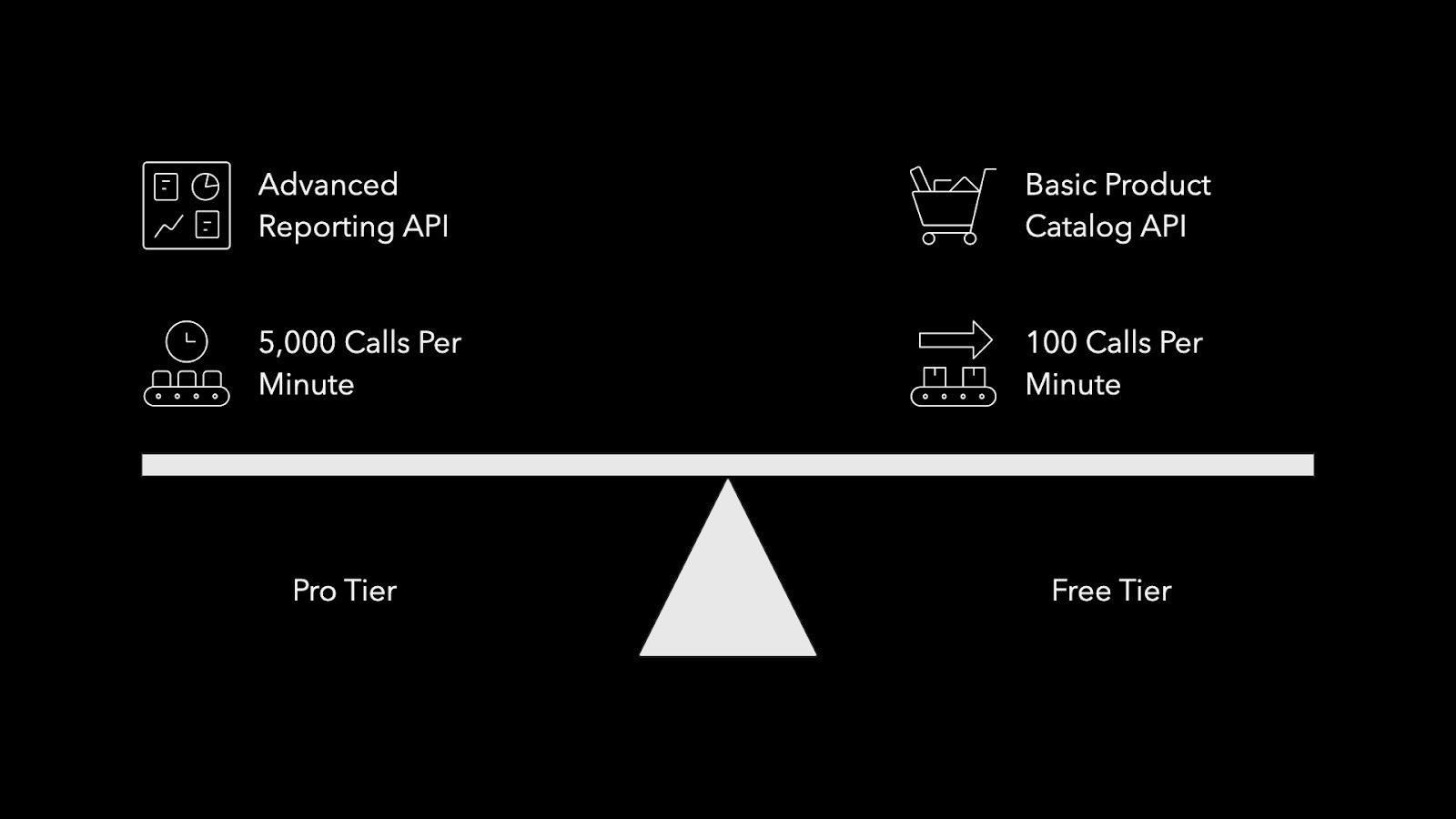
A "Pro" tier could grant access to an advanced reporting API and offer 5,000 API calls per minute, while a "Free" tier might be limited to a basic product catalog API with only 100 calls per minute.
2. Pay-as-you-go (usage-based)
The platform sets a price per API call or per gigabyte of data transferred. It's a purely transactional relationship that scales directly with usage.
Ideal Use Case
Utility-focused APIs where value is easily measured per action, such as shipping label generation, address validation, or tax calculation services.
Example
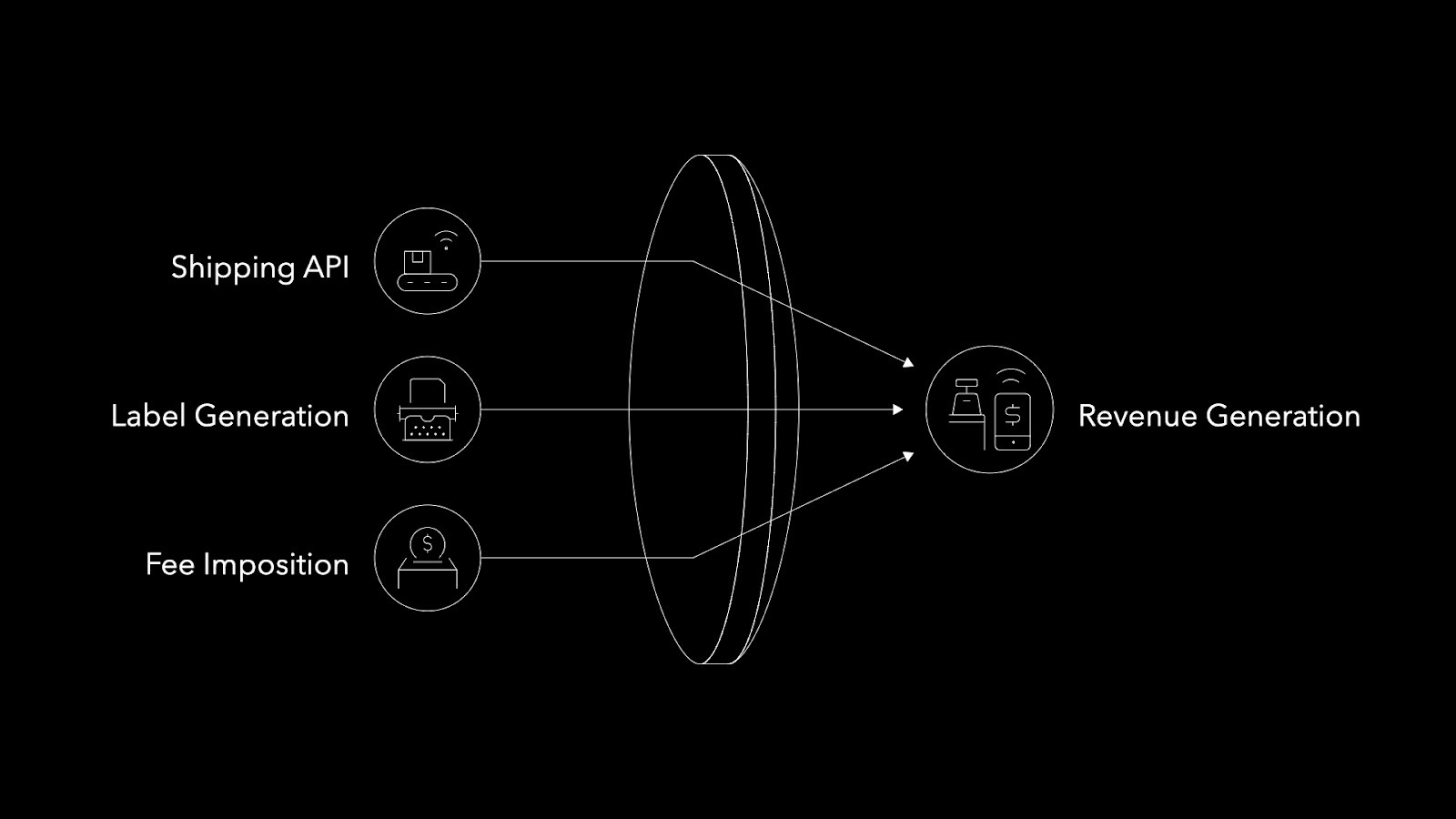
A shipping API might charge $0.05 for every shipping label successfully created.
3. Transactional / revenue share
If a third-party application uses your API to process an order or a payment, you take a cut of that transaction's value. This frictionless model ensures that the platform's revenue grows in lockstep with its users' sales volume, fostering a true partnership.
Ideal Use Case
Payment processing APIs, order management systems, and marketplace platforms where the API is integral to generating revenue for the end-user.
Example
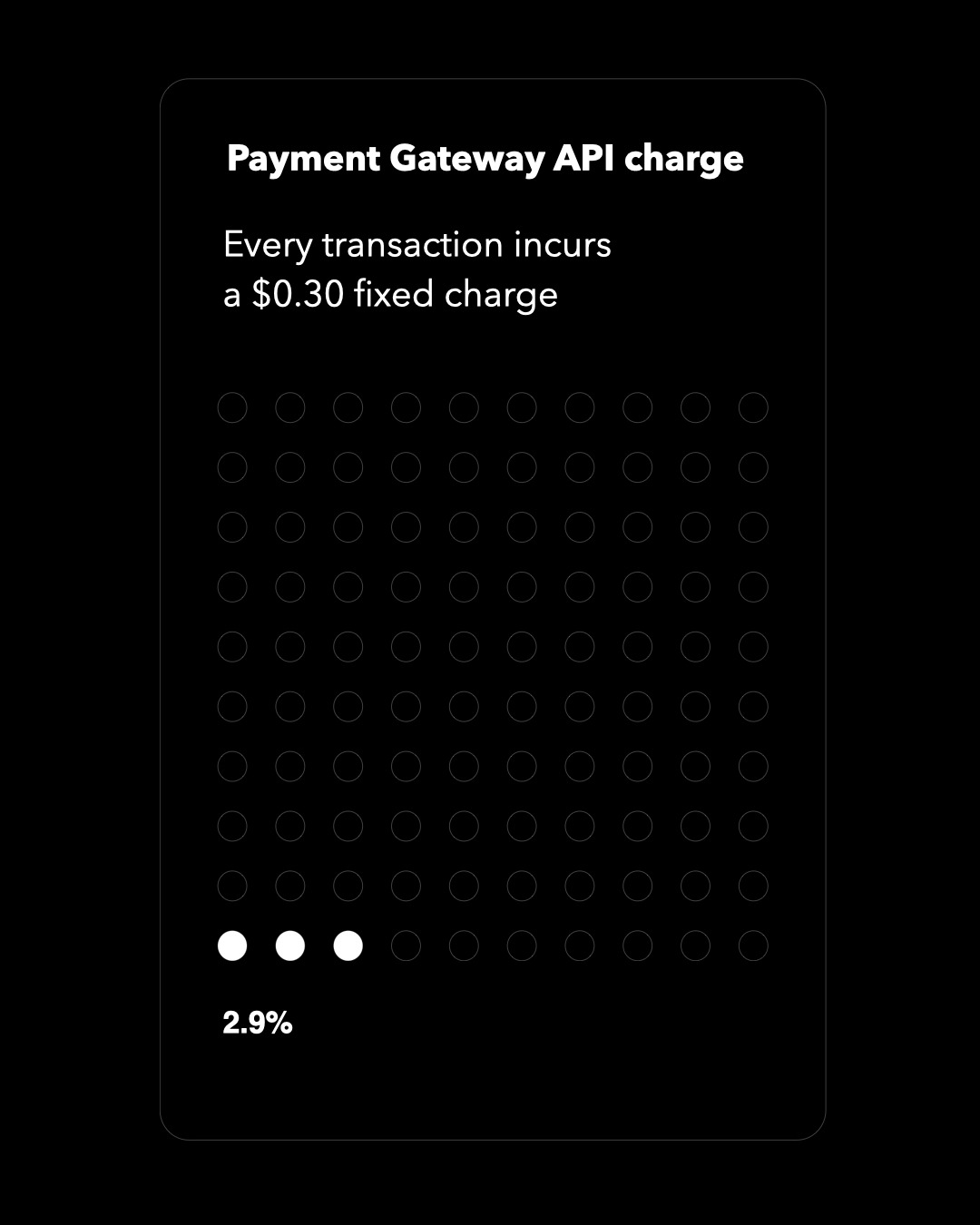
A payment gateway API that charges 2.9% + $0.30 on every transaction it processes.
4. Indirect monetization (platform growth)
The API is a feature of the core product subscription. Its value is in attracting and retaining customers for the main platform.
Ideal Use Case
Large platforms are aiming to become the central hub of their industry. The API becomes a moat that competitors find difficult to overcome.
Example

A large e-commerce platform might offer its Orders API for free, knowing that this will attract app developers who, in turn, will draw more merchants to the platform.
For a deeper dive into choosing the right strategy, read our complete guide on API monetization models
API monetization in action: A look at the industry leaders
Theory is great, but seeing how the leaders do it provides a clear blueprint for success.
1. Shopify
Shopify is a master of the ecosystem-driven, indirect monetization model. While access to its core APIs is largely included with a store subscription, it generates massive revenue through its App Store. Shopify takes a revenue share (typically 15%) on all sales made by third-party apps that use its APIs. This encourages a vibrant developer community to build solutions that make the Shopify platform more powerful, creating a flywheel of growth that benefits Shopify, its developers, and its merchants.
2. Stripe
Stripe is a prime example of a transactional model. Its entire business is built on a simple, powerful, and well-documented Payments API. For its core service, Stripe charges a clear, publicly-listed percentage and fixed fee on every single transaction it processes. This model is incredibly effective because Stripe only makes money when its users make money, creating perfect alignment and a reputation for being a developer-first company.
3. BigCommerce
BigCommerce leverages a hybrid approach. It uses its APIs as a key differentiator for its "headless commerce" offering, primarily targeting enterprise clients. Access to its robust APIs is a core feature of its higher-tier subscription plans. This allows them to use their API as a strategic tool to win large accounts, tying advanced API access to a predictable, recurring revenue stream and catering specifically to the needs of sophisticated, high-growth merchants.
Common e-commerce APIs for monetization
While a platform can have dozens of APIs, some are better suited for monetization than others due to the clear value they provide.
- Product Catalog API: Provides access to product information, including pricing, descriptions, images, and categories.
- Inventory API: Allows partners to check stock levels, update quantities, and manage inventory across multiple locations.
- Order Management API: Enables third-party systems to create, retrieve, update, and fulfill orders.
- Payments API: Facilitates payment processing, refunds, and managing transaction data.
- Shipping & Fulfillment API: Allows for the creation of shipping labels, the retrieval of shipping rates, and the tracking of shipments.
- Customer API: Provides access to customer data, order history, and account information.
The foundation for a successful API product
Successfully monetizing an API requires more than just choosing a pricing model. You need to build a robust, secure, and user-friendly infrastructure to support your API as a product.
1. Robust security and compliance
When you expose business-critical data and functionality through an API, security is paramount. This includes implementing strong authentication (like OAuth 2.0), authorization, and ensuring compliance with regulations like PCI (for payments) and GDPR (for data privacy). A single security breach can erode trust and lead to significant financial and reputational damage, making robust security a non-negotiable aspect of API monetization.
2. Scalable infrastructure and rate limiting
Your API infrastructure must be able to handle the load as your user base grows. This involves utilizing auto-scaling, load balancing, and a global content delivery network to ensure low latency and high availability. A key part of this is rate limiting: controlling how many requests a user can make in a given period. This is essential for preventing abuse, ensuring fair usage, and is often a core component of tiered subscription models.
3. A world-class developer portal
Your developer portal is your API's storefront. It's where developers come to learn, sign up, and get support. An effective portal must include:
- Clear, comprehensive documentation with code samples and interactive examples.
- Self-service onboarding for generating API keys and credentials in minutes.
- Sandbox environments for safe, consequence-free testing.
- Support channels like community forums, a detailed knowledge base, and ticketing systems for premium support.
4. Seamless billing and subscription management
You need an automated system to track usage, manage different subscription plans, generate invoices, and process payments. Integrating with a billing platform is crucial for ensuring you get paid accurately and on time, without manual overhead. This system must be flexible enough to handle different currencies, international tax laws, and prorated charges for upgrades or downgrades.
5. Analytics and performance monitoring
To treat your API as a product, you need data. You must track both operational metrics (API uptime, latency, error rates) and business metrics (adoption trends, feature usage, revenue per customer). This data is vital for making informed decisions about your product roadmap, identifying your most valuable customers, and ensuring a high level of service that justifies your pricing.
Your API is your next product
The transition from viewing APIs as a technical cost center to a strategic revenue driver is a defining feature of the modern e-commerce landscape. By embracing the "API as a Product" mindset, you can unlock new markets, build a defensible ecosystem, and create powerful new revenue streams.
Successfully launching a monetised API requires careful planning, a deep understanding of your customers, and the right technical infrastructure. By choosing the right model, learning from industry leaders, and investing in a world-class developer experience, you can position your platform for the next wave of digital growth.
Ready to turn your e-commerce APIs into a revenue engine? Schedule a Personalized Demo
You’ve spent years battling your API problem. Give us 60 minutes to show you the solution.
.svg)



